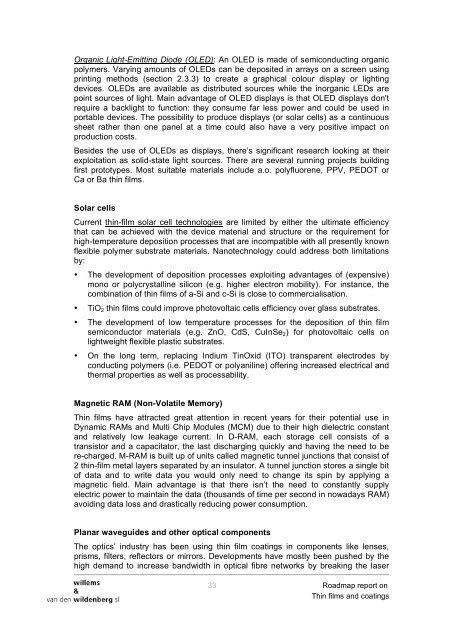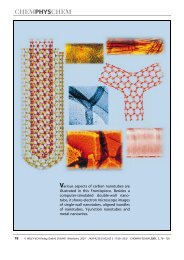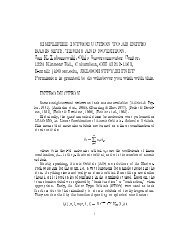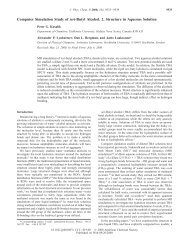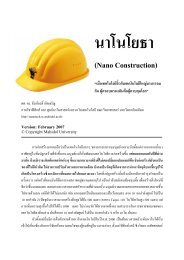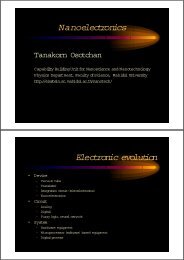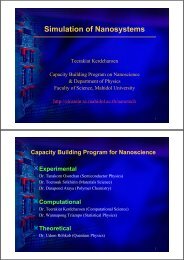'Thin films & coatings' Roadmap - Nano Mahidol
'Thin films & coatings' Roadmap - Nano Mahidol
'Thin films & coatings' Roadmap - Nano Mahidol
Create successful ePaper yourself
Turn your PDF publications into a flip-book with our unique Google optimized e-Paper software.
Organic Light-Emitting Diode (OLED): An OLED is made of semiconducting organic<br />
polymers. Varying amounts of OLEDs can be deposited in arrays on a screen using<br />
printing methods (section 2.3.3) to create a graphical colour display or lighting<br />
devices. OLEDs are available as distributed sources while the inorganic LEDs are<br />
point sources of light. Main advantage of OLED displays is that OLED displays don't<br />
require a backlight to function: they consume far less power and could be used in<br />
portable devices. The possibility to produce displays (or solar cells) as a continuous<br />
sheet rather than one panel at a time could also have a very positive impact on<br />
production costs.<br />
Besides the use of OLEDs as displays, there’s significant research looking at their<br />
exploitation as solid-state light sources. There are several running projects building<br />
first prototypes. Most suitable materials include a.o. polyfluorene, PPV, PEDOT or<br />
Ca or Ba thin <strong>films</strong>.<br />
Solar cells<br />
Current thin-film solar cell technologies are limited by either the ultimate efficiency<br />
that can be achieved with the device material and structure or the requirement for<br />
high-temperature deposition processes that are incompatible with all presently known<br />
flexible polymer substrate materials. <strong>Nano</strong>technology could address both limitations<br />
by:<br />
• The development of deposition processes exploiting advantages of (expensive)<br />
mono or polycrystalline silicon (e.g. higher electron mobility). For instance, the<br />
combination of thin <strong>films</strong> of a-Si and c-Si is close to commercialisation.<br />
• TiO 2 thin <strong>films</strong> could improve photovoltaic cells efficiency over glass substrates.<br />
• The development of low temperature processes for the deposition of thin film<br />
semiconductor materials (e.g. ZnO, CdS, CuInSe 2 ) for photovoltaic cells on<br />
lightweight flexible plastic substrates.<br />
• On the long term, replacing Indium TinOxid (ITO) transparent electrodes by<br />
conducting polymers (i.e. PEDOT or polyaniline) offering increased electrical and<br />
thermal properties as well as processability.<br />
Magnetic RAM (Non-Volatile Memory)<br />
Thin <strong>films</strong> have attracted great attention in recent years for their potential use in<br />
Dynamic RAMs and Multi Chip Modules (MCM) due to their high dielectric constant<br />
and relatively low leakage current. In D-RAM, each storage cell consists of a<br />
transistor and a capacitator, the last discharging quickly and having the need to be<br />
re-charged. M-RAM is built up of units called magnetic tunnel junctions that consist of<br />
2 thin-film metal layers separated by an insulator. A tunnel junction stores a single bit<br />
of data and to write data you would only need to change its spin by applying a<br />
magnetic field. Main advantage is that there isn’t the need to constantly supply<br />
electric power to maintain the data (thousands of time per second in nowadays RAM)<br />
avoiding data loss and drastically reducing power consumption.<br />
Planar waveguides and other optical components<br />
The optics’ industry has been using thin film coatings in components like lenses,<br />
prisms, filters, reflectors or mirrors. Developments have mostly been pushed by the<br />
high demand to increase bandwidth in optical fibre networks by breaking the laser<br />
33 <strong>Roadmap</strong> report on<br />
Thin <strong>films</strong> and coatings


